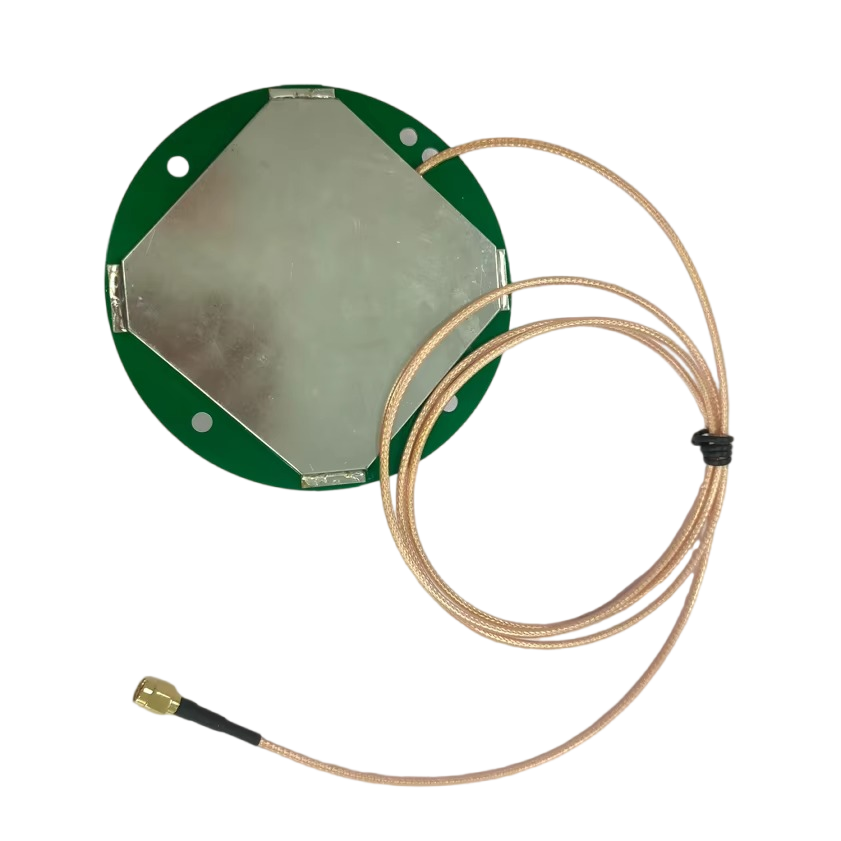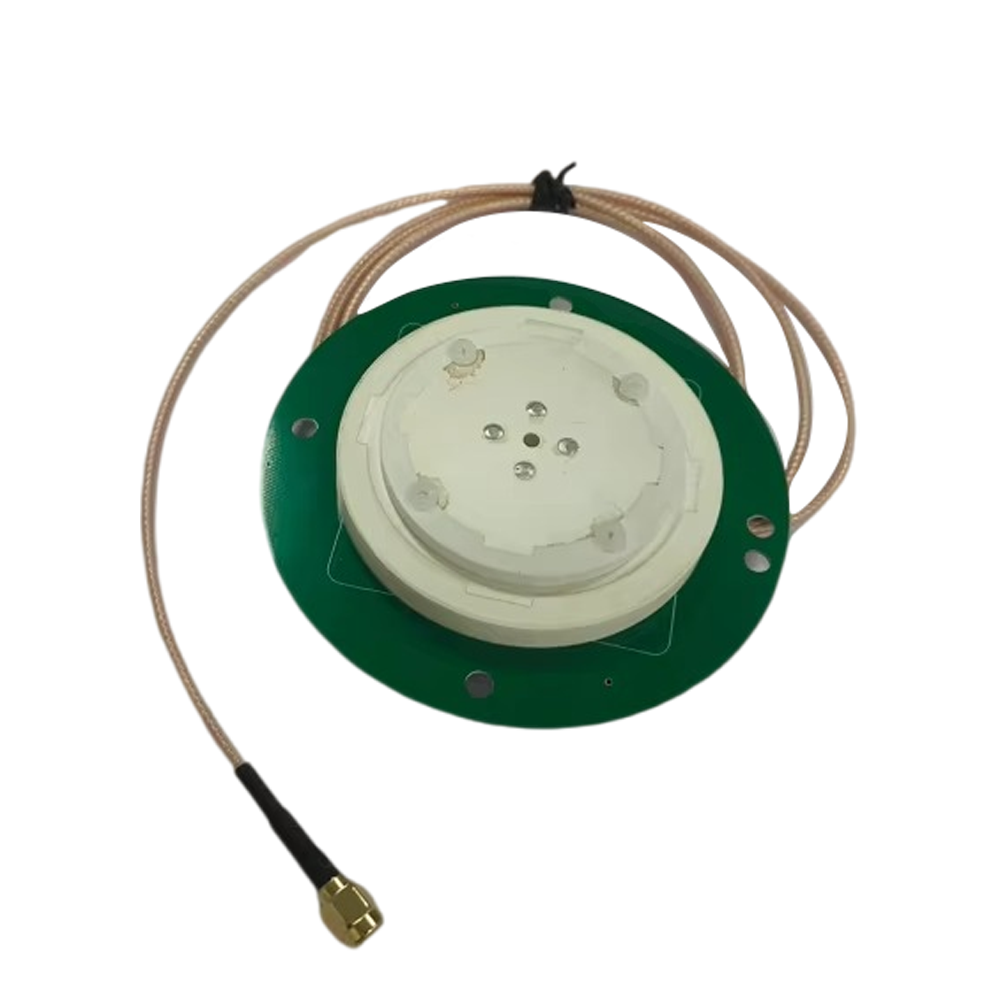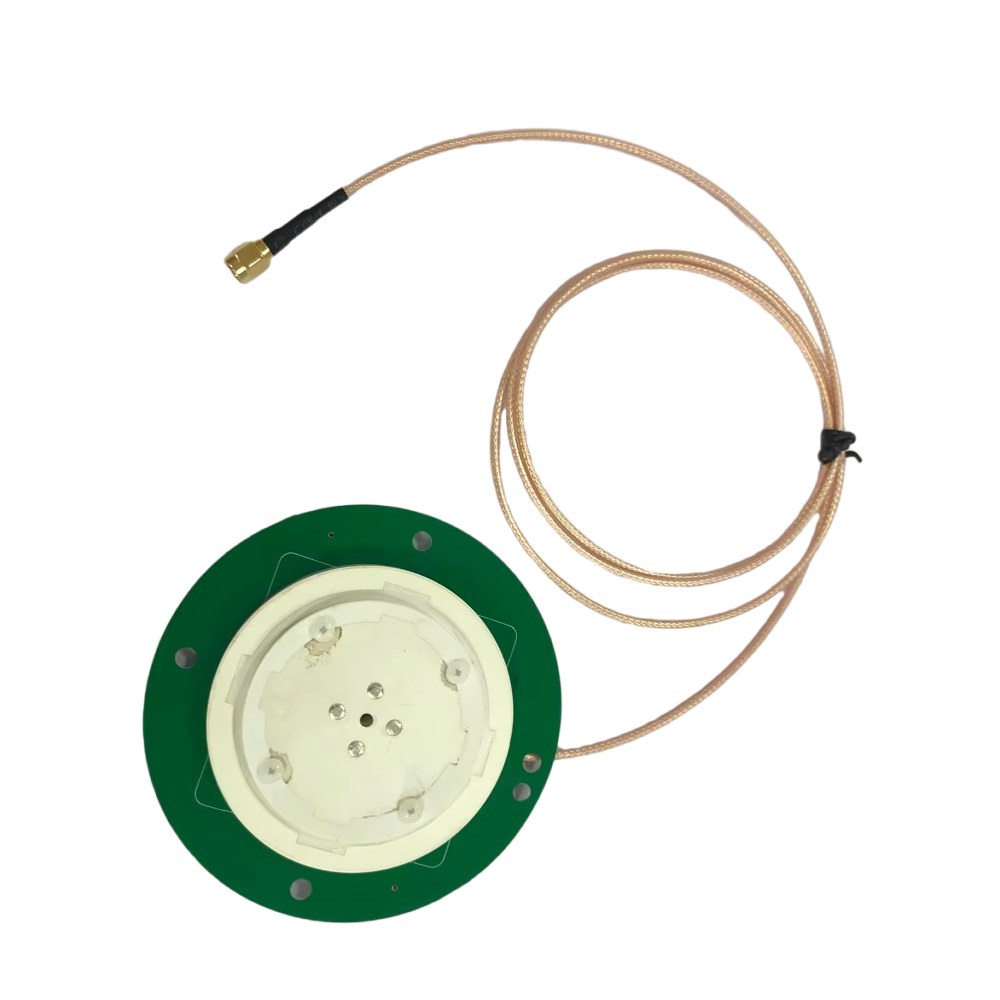Overview
A waterproof multi-band RTK car antenna module is designed to receive signals from multiple satellite constellations—including GPS (USA), GLONASS (Russia), Galileo (EU), and BeiDou (China)—across multiple frequency bands such as L1, L2, and L5. By leveraging signals from multiple bands and systems, the module enhances signal availability, reduces multipath errors, and improves positioning accuracy, especially in challenging environments like urban canyons, under tree canopies, or near reflective surfaces. The integration of RTK correction data, typically received via cellular networks or radio links, allows the module to achieve real-time positioning accuracy within 1–2 centimeters, a level of precision essential for advanced driver assistance systems (ADAS), autonomous navigation, and geospatial data collection.
The term "waterproof" underscores the module's environmental resilience. Designed to IP67 or higher standards, these antennas can withstand prolonged exposure to water, dust, extreme temperatures, and mechanical vibrations, making them ideal for outdoor and vehicular applications. Whether mounted on the roof of a delivery van, a construction vehicle, or an autonomous test car, the antenna must maintain consistent performance under harsh weather conditions, including heavy rain, snow, and dust storms.
These modules are typically compact, low-profile, and engineered for easy integration into vehicle electronics. They often feature integrated low-noise amplifiers (LNAs), filtering circuits, and sometimes even onboard processing units to pre-process GNSS signals before sending them to the main navigation system. The multi-band capability not only improves accuracy but also increases system redundancy, ensuring that if one frequency band is obstructed or degraded, others can compensate.
In summary, the waterproof multi-band RTK car antenna module is a cornerstone of next-generation vehicular navigation, enabling unprecedented levels of accuracy and reliability. Its development reflects the convergence of satellite technology, signal processing, and robust mechanical design, paving the way for safer, smarter, and more efficient transportation systems.
Design and Construction
Design and Construction of Waterproof Multi-Band RTK Car Antenna Module
The design and construction of a waterproof multi-band RTK car antenna module involve a meticulous integration of electromagnetic engineering, materials science, and environmental protection. The primary goal is to create a compact, high-performance antenna that can reliably receive weak GNSS signals across multiple frequency bands while enduring the rigors of automotive use.
At the core of the module is the antenna element, typically a patch antenna or a phased array designed for multi-band operation. Patch antennas are favored for their low profile, directional gain, and ability to be tuned to resonate across L1 (1575.42 MHz), L2 (1227.60 MHz), and L5 (1176.45 MHz) frequencies. Advanced designs use stacked patches or fractal geometries to achieve broad bandwidth and consistent phase center stability, which is crucial for RTK accuracy. The radiating element is usually fabricated using high-dielectric constant materials to minimize size while maintaining efficiency.
Surrounding the antenna element is a ground plane and shielding structure to reduce electromagnetic interference (EMI) and multipath reflections. A key component is the radome—a protective cover made from durable, RF-transparent materials such as polycarbonate or PTFE-based composites. The radome is engineered to be both waterproof and UV-resistant, ensuring long-term durability under direct sunlight and harsh weather. To achieve waterproofing, the module incorporates O-rings, gaskets, and sealed enclosures rated to IP67 or IP68 standards, meaning it can withstand immersion in water up to 1 meter for 30 minutes and is completely dust-tight.
Internally, the module includes a low-noise amplifier (LNA) mounted close to the antenna feed point to boost weak satellite signals before transmission loss occurs in the coaxial cable. Bandpass filters are integrated to suppress out-of-band interference from cellular, Wi-Fi, or radar systems. Some advanced modules also include a surface acoustic wave (SAW) filter or cavity filter for enhanced signal purity.
The housing is typically constructed from aluminum or reinforced plastic, providing both mechanical strength and thermal stability. Connectors are sealed and often use SMA or TNC types with waterproof caps. The entire assembly is designed for easy mounting on vehicle roofs or windshields using magnetic bases or adhesive pads.
Thermal management is another critical aspect. The module must operate reliably across a wide temperature range (e.g., -40°C to +85°C), requiring materials with low thermal expansion and stable electrical properties. Finally, the design emphasizes electromagnetic compatibility (EMC), ensuring the antenna does not interfere with other vehicle electronics.
Working Principles
3.1 RTK Correction Mechanism
RTK achieves centimeter-level accuracy by resolving carrier-phase ambiguities in real time:
Base Station Setup: A fixed ground station (or virtual reference station, VRS) transmits raw GNSS measurements (carrier phase, pseudorange) to the vehicle via 4G/5G or LTE.
Double Differencing: The vehicle’s RTK receiver subtracts its measurements from the base station’s to eliminate clock errors, ionospheric delays, and tropospheric effects.
Ambiguity Resolution: The receiver uses least-squares adjustment to constrain ambiguities to integer values, typically achieving a "FIX" solution within 2–10 seconds.
3.2 Multi-Band Advantages
Ionospheric Correction: Dual-frequency (L1/L2) or triple-frequency (L1/L2/L5) measurements enable direct computation of ionospheric delays, reducing vertical errors by up to 50%.
Multipath Mitigation: Higher frequencies (e.g., L5 at 1176.45 MHz) have narrower bandwidths, making it easier to filter reflected signals from buildings or road infrastructure.
Faster Convergence: Multi-band receivers effectively "see" 1.5× more satellites than single-band systems, accelerating ambiguity resolution by 40–60% in urban environments.
3.3 PPP-RTK Hybridization
Some antennas support Precise Point Positioning (PPP) combined with RTK (PPP-RTK), which uses state-space corrections for satellite clocks, orbits, and ionospheric parameters. This extends RTK accuracy to global scales but requires longer convergence times (5–15 minutes) compared to local RTK.
Advantages and Challenges
-
The waterproof multi-band RTK car antenna module has become a pivotal component across a diverse range of industries, enabling high-precision positioning in dynamic and demanding environments. Its primary application lies in autonomous vehicles and advanced driver assistance systems (ADAS), where centimeter-level accuracy is essential for lane-level navigation, obstacle avoidance, and safe path planning. In self-driving cars, the module works in tandem with LiDAR, radar, and camera systems to provide a robust and redundant positioning solution, ensuring the vehicle knows its exact location even when visual cues are obscured by weather or darkness.
Another major application is in intelligent transportation systems (ITS), where fleets of commercial vehicles—such as delivery trucks, buses, and emergency services—leverage RTK-enabled positioning for real-time tracking, route optimization, and geofencing. This level of precision improves logistics efficiency, reduces fuel consumption, and enhances safety through better traffic management and collision avoidance systems. In urban environments with complex road networks, the multi-band capability ensures consistent signal reception despite signal blockages from tall buildings and tunnels.
Precision agriculture is another rapidly growing field for these modules. Modern farming equipment, including tractors, sprayers, and harvesters, use RTK positioning for automated guidance, variable rate application, and yield mapping. The waterproof design is particularly advantageous in this context, where equipment is routinely exposed to mud, rain, and dust. By minimizing overlap and ensuring accurate row alignment, farmers can increase crop yields, reduce chemical usage, and lower operational costs.
Surveying and mapping professionals also benefit from mobile RTK solutions integrated into vehicles or drones. Mobile mapping systems equipped with these antennas can rapidly collect geospatial data for infrastructure planning, environmental monitoring, and disaster response. The ability to maintain high accuracy while in motion significantly reduces the time and labor required for traditional static surveys.
Applications and Future
-
In the construction and mining sectors, heavy machinery outfitted with RTK modules enables machine control systems to operate with extreme precision in grading, excavation, and site preparation. This leads to reduced rework, improved safety, and faster project completion.
Looking ahead, several key trends are shaping the future of waterproof multi-band RTK car antenna modules. The integration with 5G networks will enable faster and more reliable transmission of RTK correction data, reducing latency and improving performance in real-time applications. Artificial intelligence and machine learning are being employed to enhance signal processing, detect and mitigate multipath errors, and predict signal degradation in complex environments.
Miniaturization and cost reduction are also driving broader adoption. As semiconductor technology advances, more functionality is being integrated into smaller form factors, making it feasible to embed high-precision GNSS into consumer-grade vehicles and IoT devices. Furthermore, the emergence of low-Earth orbit (LEO) satellite constellations could complement traditional GNSS, offering additional signals for improved coverage and resilience.
In conclusion, the applications of these modules are expanding rapidly, and future innovations will continue to push the boundaries of what is possible in high-precision navigation.
Conclusion
The waterproof multi-band RTK car antenna module stands at the forefront of modern positioning technology, representing a critical convergence of precision, durability, and adaptability. By integrating multi-frequency and multi-constellation GNSS reception with real-time kinematic correction, it delivers centimeter-level accuracy that is indispensable for the next generation of intelligent transportation and autonomous systems. Its robust, waterproof construction ensures reliable operation in the harshest environmental conditions, making it suitable for deployment in everything from urban delivery fleets to off-road agricultural and construction machinery.
This technology has already transformed industries such as autonomous driving, precision agriculture, surveying, and smart logistics, where the demand for accurate, real-time location data is non-negotiable. As vehicles become increasingly connected and automated, the role of high-precision GNSS will only grow in importance, serving as a foundational layer for safety, efficiency, and innovation.
Despite current challenges—such as signal interference, dependency on correction networks, and cost—ongoing advancements in semiconductor design, AI-enhanced signal processing, and next-generation communication networks like 5G are steadily overcoming these barriers. The trend toward miniaturization, lower power consumption, and mass production is making high-precision positioning more accessible than ever before.
In the broader context of smart cities and sustainable mobility, the waterproof multi-band RTK car antenna module is not just a technical component, but a key enabler of a safer, more efficient, and environmentally responsible transportation ecosystem. As research and development continue to refine its capabilities, this technology will remain a cornerstone of the global shift toward intelligent, autonomous, and connected vehicles. Its evolution will undoubtedly play a central role in shaping the future of mobility in the 21st century.




































































 Language
Language
 En
En Cn
Cn Korean
Korean

 Home >
Home > 







 18665803017 (Macro)
18665803017 (Macro)













